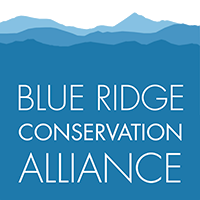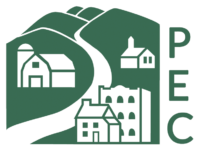Webinar: Introduction to Conservation Easements
Forests, agriculture, streams and rivers, small towns, history, trails, and more. The Blue Ridge mountains and surrounding landscape offer so much to its residents and visitors alike. And most of this is thanks to private landowners.
The Blue Ridge Conservation Alliance hosted a webinar that tells the natural story and interconnectedness of the Appalachian Trail, the Blue Ridge mountains, and the surrounding area. We identify threats to the region and discuss an important tool that individual landowners can use to piece together its protection – a conservation easement. Afterwards, landowners tell us about their experience with protecting their own properties.
This webinar was hosted thanks to support from the Appalachian Trail Conservancy, and thanks to collaboration between Friends of the Blue Ridge Mountains, Land Trust of Virginia, , Piedmont Environmental Council, and Potomac Appalachian Trail Club.
Conservation Easement Q&A
There are a number of factors to consider: an organization’s region, conservation focus, funding they have available, and more. There are state, federal, local, and non-profit groups that can help and hold a conservation easement. Lots of things to consider! PEC or LTV can help narrow down who is best for you to talk with.
There is no minimum acreage required to protect a property. Subdivision is a major factor in considering financial incentives. However, other factors are considered when protecting a property: soils, forest cover, water resources, and other characteristics. Now, some organizations may have their own requirement for easements they hold, but that depends on the organization.
Yes, an organization must have funding and a process for long term stewardship of the easement. Stewardship means the organization reaches out to the landowner, visits the property, and provides resources in perpetuity. Some organizations charge a “stewardship fee” to cover these costs while others do not.
There are two ways to look at local property tax. It depends what county a landowner is in. Some counties offer land use taxation – which reduces property tax on properties that qualify as being used as agriculture. If an easement is put on a property that’s already in land use taxation, then the property tax may not go down any more but it will remain in land use taxation forever. If a county does not have a land use taxation program, property tax may go down on a property by default – since the property value decreases some as a result of the restrictions.
You would benefit from lowered taxes (due to lowered property value) but wouldn’t receive any State or Federal tax credits.
PDR easements focus first on subdivision – especially since they purchase the development rights. But different localities have different goals – they may an additional focus on protecting agriucltural soils, water quality, etc.
A conservation easement is permanent – meaning it runs with the land forever and every landowner must follow its terms.
These are two different programs a landowner may take advantage of if they have a qualifying conservation easement. The Virginia Land Preservation Tax Credit offers a landowner 40% of their conservation easement value to either use to offset their own taxes or sell or transfer to other Virginia taxpayers. The Federal Tax Deduction allows a landowner to deduct their full easement value minus what they receive in tax credits. The deduction cannot be transferred and/or sold. More details and an example are in the presentation.
The Virginia Tech Cooperative Extension hosts workshops and publishes resources that help landowners and their families with these types of questions. One resource for forest landowners: https://ext.vt.edu/natural-resources/legacy-planning.html. You can contact anyone on that page for more information of agricultural lands, also. Other agencies and groups also offer resources.
A conservation easement ensures land stays in-tact and available for agriculture, forestry, and open space uses. Legacy/estate planning is important and helps evaluate the wants, needs, challenges, and opportunities of the family and land. It’s best to discuss this with family members early on and throughout the years.
Feel free to reach out to any of the webinar hosts. They can help answer any questions you have, get you more information, and connect you with others that can help.
Clarke County Conservation Easement Authority – Alison Teetor, Natural Resource Planner
www.clarkelandconservation.org / ateetor@clarkecounty.gov / 540-955-5134
Friends of the Blue Ridge Mountains –
www.friendsofblueridge.org / Info@friendsoftheblueridge.org
Land Trust of Virginia – Seth Young, Conservation and Stewardship Associate
www.landtrustva.org / seth@landtrustva.org / (540) 687-8441
Piedmont Evironmental Council – Tracy Lind, Conservation Field Representative
www.pecva.org / tlind@pecva.org / (540) 347-2334
Potomac Appalachian Trail Club – Rob Lamar, Natural Resource Advisor
www.patc.net / Natural_Resource@patc.net




